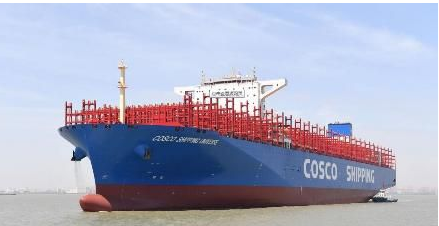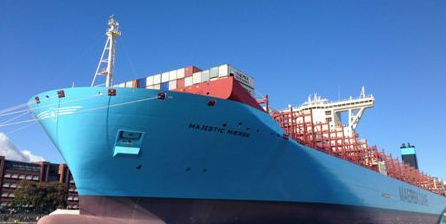 The large-scale ship is an inevitable trend in the future development or is about to reach the end. The development trend of large-scale container ships has once again triggered controversy in the industry.
The large-scale ship is an inevitable trend in the future development or is about to reach the end. The development trend of large-scale container ships has once again triggered controversy in the industry.
Viewpoint 1: The trend of large-scale container ships will continue
According to Clarkson's data, the average annual growth rate of the fleet of over 12,000 TEUs over 12,000 TEU has reached 48.6%.
The industry believes that the large-scale ship is an inevitable trend in the future. With the improvement of technology and the change of energy structure, container ships may serve as floating storage centers at sea. According to this development trend, the trend of large-scale container ships will continue.
As the world economy tends to be globalized and standardized, the global shipping network is gradually taking shape, especially in recent years, the trend of containerized regular airline alliances is obvious. In order to pursue economies of scale, shipping companies have made every effort to promote the large-scale container ships on major ocean routes, which have had a major impact on shipping companies and ports, such as water depth, width, headroom, ship locks, and pier length.
Shipping analysts believe that factors such as restrictions on bridges in Osaka, Hong Kong and Hamburg will affect the entry and exit of very large container ships. Therefore, the development of large-scale ships also requires port upgrade facilities to improve container handling efficiency and reduce shipping costs.
Analysts pointed out that the key to the large-scale development of container ships is whether they can make liner companies profitable. In 2018, the global container shipping market experienced a slight decline. From the perspective of supply and demand, the global container transportation volume in 2018 was about 200 million TEU, an increase of 4.5%. Compared with 2017, the growth rate slowed down. On the other hand, the delivery volume of new ships in 2018 increased by 18% year-on-year, of which container shipping capacity of 10,000 TEU and above accounted for 82%, indicating that large container ships are still the main force of delivery.
In terms of comprehensive factors such as water depth, port bridge cranes, and navigation parameters, the analyst pointed out that there are only 28 ports in Asia and Europe, such as Tangier, Bremen, Hamburg, Gothenburg, Aarhus, Le Havre, The seven ports of Gdansk cannot meet the berthing of 20,000 TEU ultra-large container ships. There are 17 ports that can accommodate 25,000 TEU container ships, including Busan, Shanghai, Ningbo, Yantian, Tanjung Pallapas, Gwangyang, Xiamen, Klang, Algeciras, Felixstowe, Antwerp, William, Rotterdam. Ports such as Zeebrugge, Dunkirk, Malta, and Alishan Port can meet the berthing and loading and unloading requirements of ultra-large container ships.
















 RCCN WeChat QrCode
RCCN WeChat QrCode Mobile WebSite
Mobile WebSite